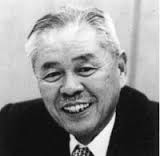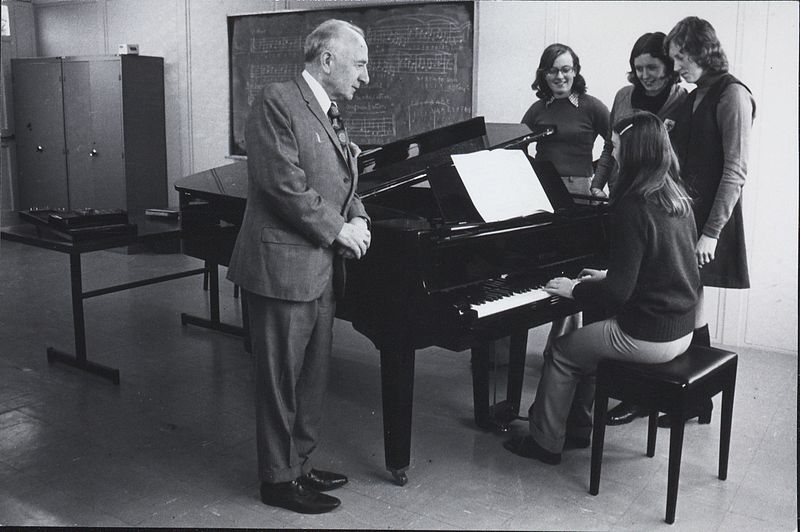Kanban is at the core of lean practices
Why get kanban training? Taiichi Ohno, one of the founding spirits of the Toyota Production System (TPS), called kanban the “operating method” of the TPS.1 Insofar as TPS is the basis for what we call lean management, kanban is of central importance to lean. I would go so far as to say that it is the foundation that enables all other lean practices. If you want to use lean practices on a daily basis, then you need to understand and use kanban.

Impressive, immediate, sustainable
I have worked with organizations to develop lean practices and to use kanban. I have done lean training and I offer a variety of kanban training courses, both Kanban eLearning and face-to-face training. Therefore, I am not a disinterested party. In my professional services, I have chosen to focus on kanban training because I find the results to be much more impressive, immediate and sustainable.
Feel the flow
So it is with learning how to manage work in a lean way. The best way to learn lean is by being lean, by doing your daily work in a lean way. And the way to be lean every day is to use kanban.
It’s OK to learn a list of types of waste, but you are really empowered to remove waste when you see it in your daily, kanban practices. It is better for a team to be at ease with identifying its own problems and finding their solutions, rather than having the finger pointed at them by someone else. Can you put your own workplace in order and make it shine in a durable way if you do not do it yourself? And when a team takes responsibility for the quality of the work it performs, it can succeed in delivering that quality if it limits its work in progress, avoiding the intolerable pressure of management to do more and work faster. Using kanban makes the theory real.

You learn to drive a car by driving a car. You cannot learn to drive by studying the theory of transmissions and horsepower. But the driver has an intuitive understanding of them. He or she feels the difference between passing in 5th gear and passing in 3rd gear. An animated view of an internal combustion engine might be cool. It might even help you understand why your car has broken down and how to repair it by yourself, but it does nothing to teach you how to operate the vehicle.
You learn to play a piano by playing the piano. Do you think you can learn to play by watching someone else play the instrument? The way to Carnegie Hall is via practice! And how many budding musicians fall by the wayside because they are forced to take a year of music theory before they can experience the joy of making sounds and feeling rhythms they create themselves?

Existing training programs give kanban short shrift
How much time do existing lean training courses allocate to kanban? In one course, kanban is only one of nine topics in a section that is only 10% of the syllabus. That works out to barely 10 minutes during a two day course! That’s just enough time to learn that the concept exists, but no time to learn how you will really use kanban on a daily basis. Guess how long it takes to forget what you learn in such courses.
Now, I do not mean to say that these syllabuses contain unimportant information and I would not suggest eliminating any of the topics they cover. Nor would I recommend lengthening the courses. But the result is that there is just enough time to briefly mention the principle of limiting work in progress, without seeing it in action. How can you believe in the effectiveness of WIP limits unless you see it for yourself?
A few minutes might be delegated to explaining the principle of pulling work, as opposed to pushing work. But this theory makes little sense if you are accustomed to having managers expediting much of your work. Explaining these basic kanban principles leaves no time for discussing bottlenecks and how to manage them. It leaves no time for understanding the principles of replenishing a team’s queues. It leaves no time for presenting the concept of options in work and the benefits of delaying work until the last responsible moment.
Learn kanban first
Suppose you take lean management training and cover all the main topics, except kanban. You simply cannot derive how kanban works from the rest of lean, because kanban is based on principles that seem to be anti-intuitive, at first. The result is that you learn a lot of theory, but you do not learn how that theory is applied in the course of your daily work! When you learn without doing, you quickly forget.
But if you learn kanban first, you have a perfect framework for understanding the other lean practices. Kanban helps you see for yourself the different types of waste and provides the techniques for eliminating waste. The Voice of the Customer is a living voice, replenishing your input queue and receiving your output. Kanban is the dynamic, visual demonstration of customer value and the value stream. Do you want to use to 5 S approach to reduce mistakes, increase efficiency and improve continually? Kanban provides a structured approach to help you sort, systematically arrange, shine, standardize and sustain those improvements. It makes kaizen everyone’s job on a daily basis.
Reasons for kanban training
- Practical rather than theoretical
Lean training syllabuses cover a lot of information, but they focus principally on communicating theory. Kanban training can be directly implemented by the participants. You can work according to the kanban method during the training and you leave the training with deliverables directly usable by your team. - Continual improvement rather than one-off projects
With lean training, there is the risk that you use the training to support an improvement project, rather than starting the cultural transformation of continual improvement. - Bottom-up rather than top-down
Kanban training is best suited to help teams transform their own way of working. Lean training tends to create a cadre of lean specialists or internal consultants. Kanban supports better buy-in to waste elimination and more lasting improvements, because a team identifies and eliminates its own wasteful practices.
![]() The article Kanban training compared to lean training by Robert S. Falkowitz, including all its contents, is licensed under a Creative Commons Attribution-NonCommercial-ShareAlike 4.0 International License.
The article Kanban training compared to lean training by Robert S. Falkowitz, including all its contents, is licensed under a Creative Commons Attribution-NonCommercial-ShareAlike 4.0 International License.
1See, for example, Taiichi Ohno, Toyota Production System. Beyond Large-Scale Production. CRC Press, 1988. p. 27.
Credits: Fig. 1: Downloaded from https://s3.amazonaws.com/s3.timetoast.com/public/uploads/photos/6371703/taiichi_ohno.jpg?1424969336
Fig. 2: Downloaded from https://web.archive.org/web/20160529175059/https://www.flickr.com/photos/95717549@N07/9370854744 No reuse restrictions.
Fig. 3: By Y_tambe [GFDL (https://www.gnu.org/copyleft/fdl.html) or CC-BY-SA-3.0 ( http://creativecommons.org/licenses/by-sa/3.0/ )], via Wikimedia Commons https://commons.wikimedia.org/wiki/File%3AWankel_Cycle_anim_en.gif


Leave a Reply